Back to Page
Amazon Product Listing
13 Amazon Listing Optimization Hacks To Learn From (+ Examples)
13 Amazon Listing Optimization Hacks To Learn From (+ Examples)
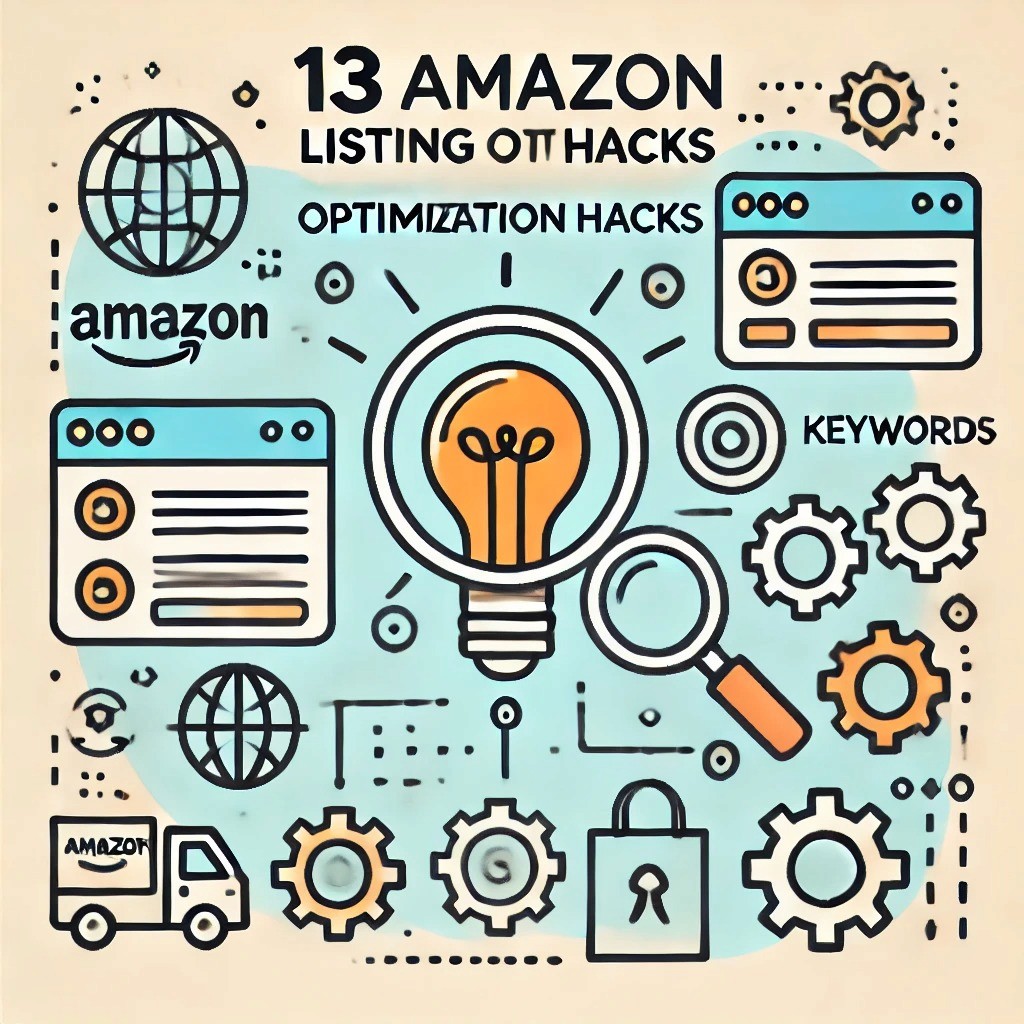

Back to Page
Amazon Product Listing
13 Amazon Listing Optimization Hacks To Learn From (+ Examples)

Optimizing your Amazon listings will help you sell up to 50% more. Even if you have the best products, stunning photos, and a standout brand, they won't sell if shoppers can't find them. That's where Amazon listing optimization steps in.
If the idea of listing optimization seems daunting, especially with Amazon's constantly changing rules, don't sweat it. We're here to guide you through. This guide lays out 13 straightforward strategies that are proven to get your products noticed. We'll show you how to make your listings shine with clear, simple steps.
What Is Amazon Product Listing & Why Is It Important?
An Amazon product listing includes your product's photos, description, and price. This is where shoppers decide if they want to buy what you're selling. If your product listing is clear, attractive, and has the right details, more people will see it, and more of them will end up buying your product. The more effectively you can communicate the value and appeal of your product through your listing, the better your chances of success on this competitive platform.
13 Amazon listing optimization hacks to boost your sales & visibility
Well-optimized listings can boost conversions by up to 30%. Each of the 13 hacks we're about to explore is a powerful step to boost your product's visibility on search results and sales on Amazon.
As you go through these techniques, challenge yourself to identify at least 2 that you’ve overlooked or underestimated in your current strategy.
Optimize your product titles with the right keywords
Including the right keywords in your product title matches your product with the right customers.
How to do it:
Start by identifying high-volume (typically has 1k searches/month), relevant keywords. Use Tools like Amazon’s search suggestions, MerchantWords, or Helium 10 for this.
Choose keywords that closely match your product’s key features and benefits. Pay attention to the search volume and relevance indicators in Amazon's search suggestions and Helium 10's "Magnet" tool. In Amazon's search bar, look for autocomplete suggestions that fit your product, while in Helium 10, filter for keywords that closely align with what your product offers.
Weave the most important keywords into the beginning of your product title. For example, if you're selling a waterproof, high-definition action camera, instead of packing your title with every possible keyword, you might write: "HD Action Camera - Waterproof, 4K, Wi-Fi Enabled, Wide Angle Lens." This title starts with the primary keyword, "HD Action Camera," followed by the most important features, all while keeping the title clear and easy to understand for your customers.
Example: Amazon’s Search Suggestions
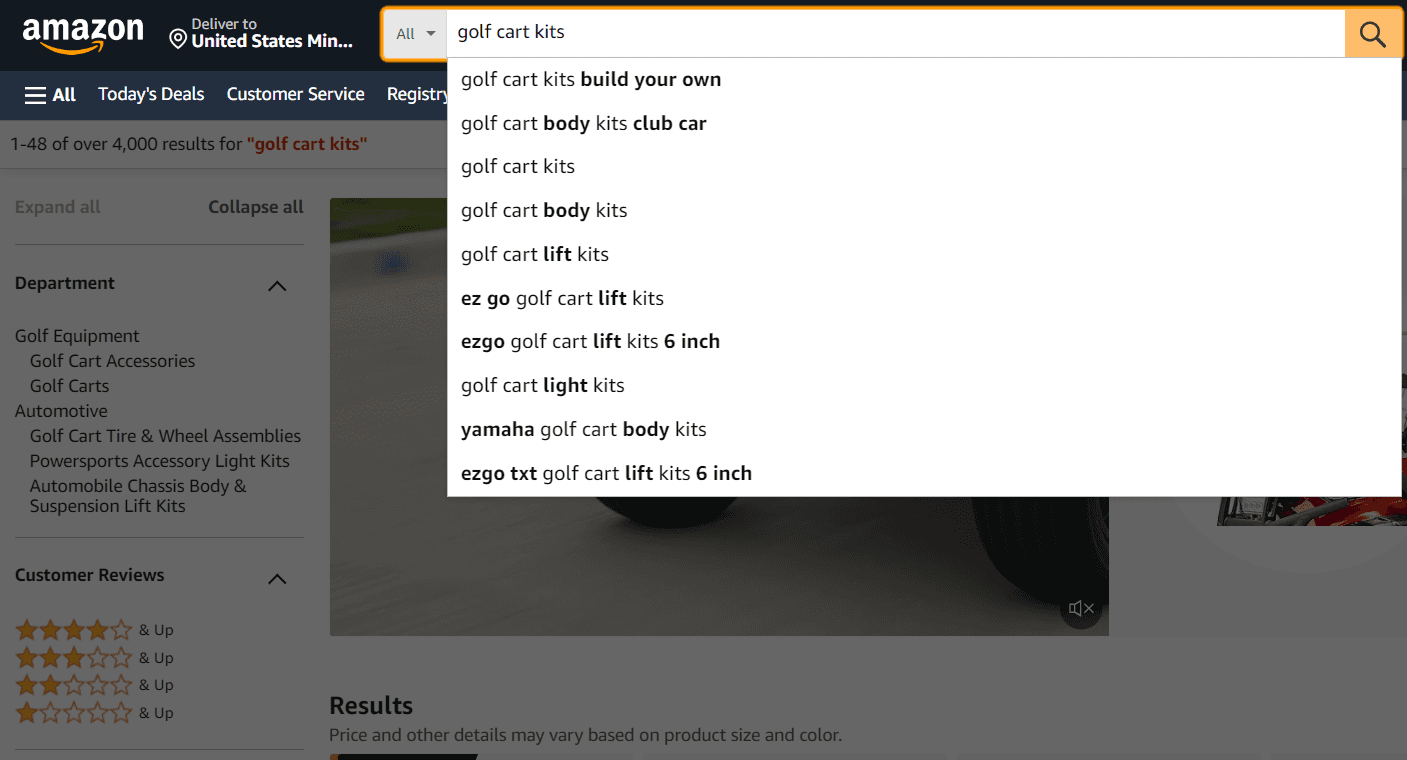
When optimizing your product titles, look for terms that shoppers already use to search for products like yours on Amazon. For instance, if you're selling golf cart kits, you might notice that shoppers use a variety of specific search terms, such as "golf cart kits build your own," "golf cart body kits club car," and "golf cart lift kits."Place these targeted phrases at the start of your title or where they naturally fit to make sure your listing resonates with potential customers searching for customizable options and is easily found.
Now, if your product is a very niche item like golf cart accessories, look for other pages selling the same product and look at their product menu.
It's usually a dropdown at the top or a left-side menu like what you can find in this golf cart accessory shop. Add the terms you find in the menu - these are the commonly searched-for items and search terms your target customers will most likely use too.
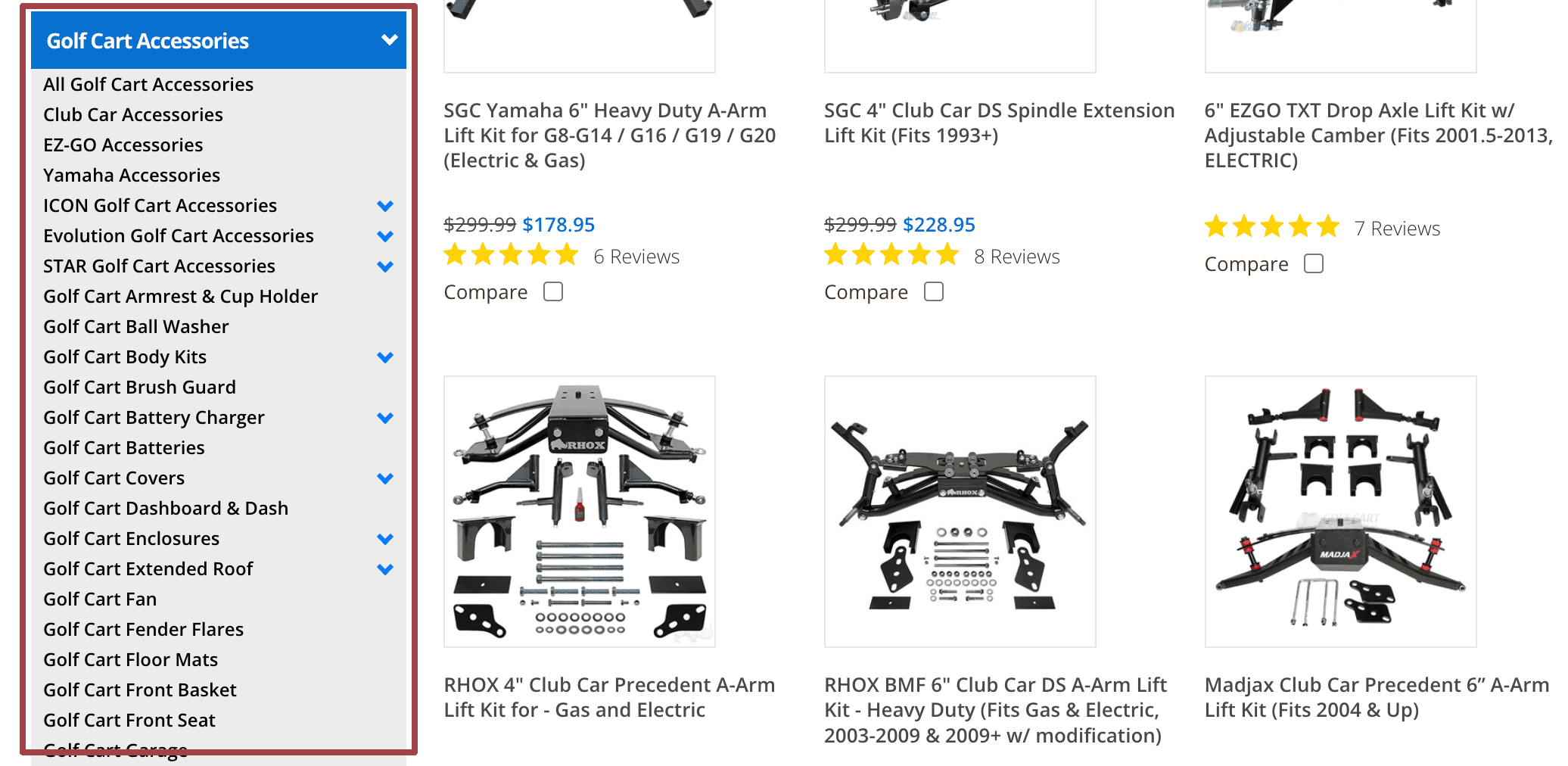
Partner with eStore Factory for expert Amazon optimization services
If you are not sure where to kick things off, eStore Factory offers SEO consultancy to manage sponsored ads, they focus on boosting your Amazon listing optimization efforts.
Here’s how it works:
Look into eStore Factory's SEO consultancy, Sponsored Ads management, and account management services, to see which address your challenges.
Collaborate with their team to craft a strategy that aligns with your product goals and market positioning.
With eStore Factory's strategies in place, keep an eye on your listing’s performance and adjust as needed.
Enhance your product images for clarity and appeal
High-quality product images capture customer interest on Amazon. Clear, appealing photos are those that highlight your product's key features, setting you apart from competitors and boosting click-through rates.
How to do it:
Make sure your pictures are at least 1000 pixels in height or width so customers can zoom in without losing clarity.
Use multiple angles and close-up shots, such as top, side, and bottom views, to highlight important features and benefits of your product.
Good lighting is essential. Natural light works best to reveal true colors and textures.
A plain, white background focuses attention on your product and complies with Amazon’s image guidelines.
Example: High-quality picture of Amazon products

Utilize bullet points for key features and benefits
Bullet points quickly highlight what's great about your product and communicate your product's value proposition. It makes it easy for shoppers to understand why they should choose your product over others.
How to do it:
Start with the most compelling product benefit. What problem does it solve for the customer?
Use specific details about features and benefits. Instead of saying "effective," say our supplements are "formulated with clinically proven ingredients to support immune health and energy levels."
Keep each bullet point short and clear. Make sure they are easy to read and straight to the point to keep the shopper's focus.
Example:
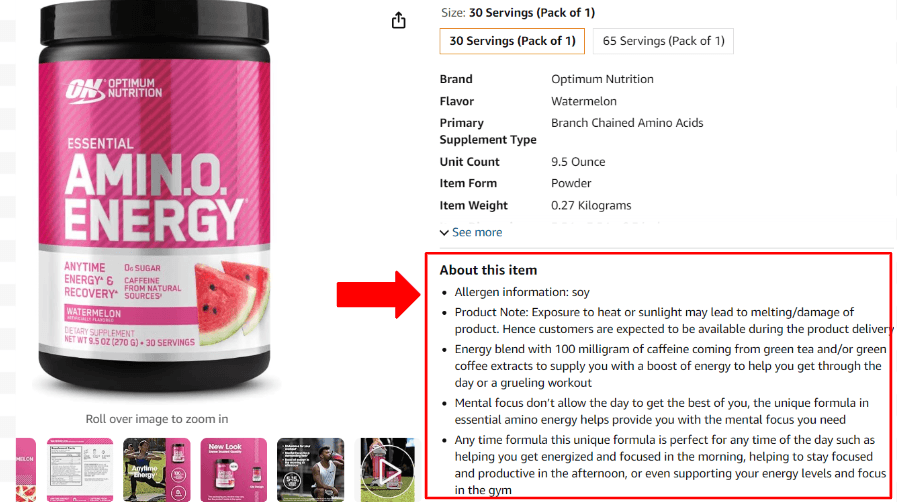
Take a look at how this supplement's description gets right to the point. It neatly lays out the benefits and features in a way that's quick to read and easy to understand.
When you're improving your Amazon listings, check out what successful supplement brands do on their sites. We can learn a lot by looking at how they set up their pages.

For instance, this supplement brand, Transparent Labs, lists each supplement's dose and directly explains how it helps with workouts. They use simple language and cite research to prove their points, making it easy for customers to see the benefits.
Maximize backend search terms
Backend search terms are hidden gems for improving your product’s detail page’s visibility on Amazon. These invisible keywords help Amazon understand what your product is about, matching it to customer searches without cluttering your visible listing.
How to do it:
Like with your title, use keyword research tools to find related terms. Think beyond the obvious, including synonyms, related terms, and common misspellings.
Select highly relevant keywords that are not already in your product title or bullet points. Avoid repetition to make the most of your keyword quota.
Amazon limits the number of backend keywords to 250 bytes, including spaces and punctuation. Ensure you're within this limit, focusing on the most impactful keywords.
Amazon's search landscape is dynamic. Make sure to check and refresh your backend keywords every few months, or more often if needed, based on how they're doing and shifts in what customers are searching for.
Collect & leverage customer reviews
Customer reviews build trust and influence buying decisions on Amazon. Positive feedback enhances your product's credibility and contributes to higher search rankings.
How to do it:
Make sure your product meets. Focus on quality, include bonus features, and offer excellent customer service to enhance their experience.
Use Amazon’s automated email system to ask customers for a review after their purchase. Make sure your message complies with Amazon's policies.
Guide customers on how they can leave a review, perhaps with a follow-up email that includes direct links to the review page.
Aim to respond to and address issues in negative reviews within 24 hours if possible. This shows potential customers that you value feedback and are committed to customer satisfaction.
Example
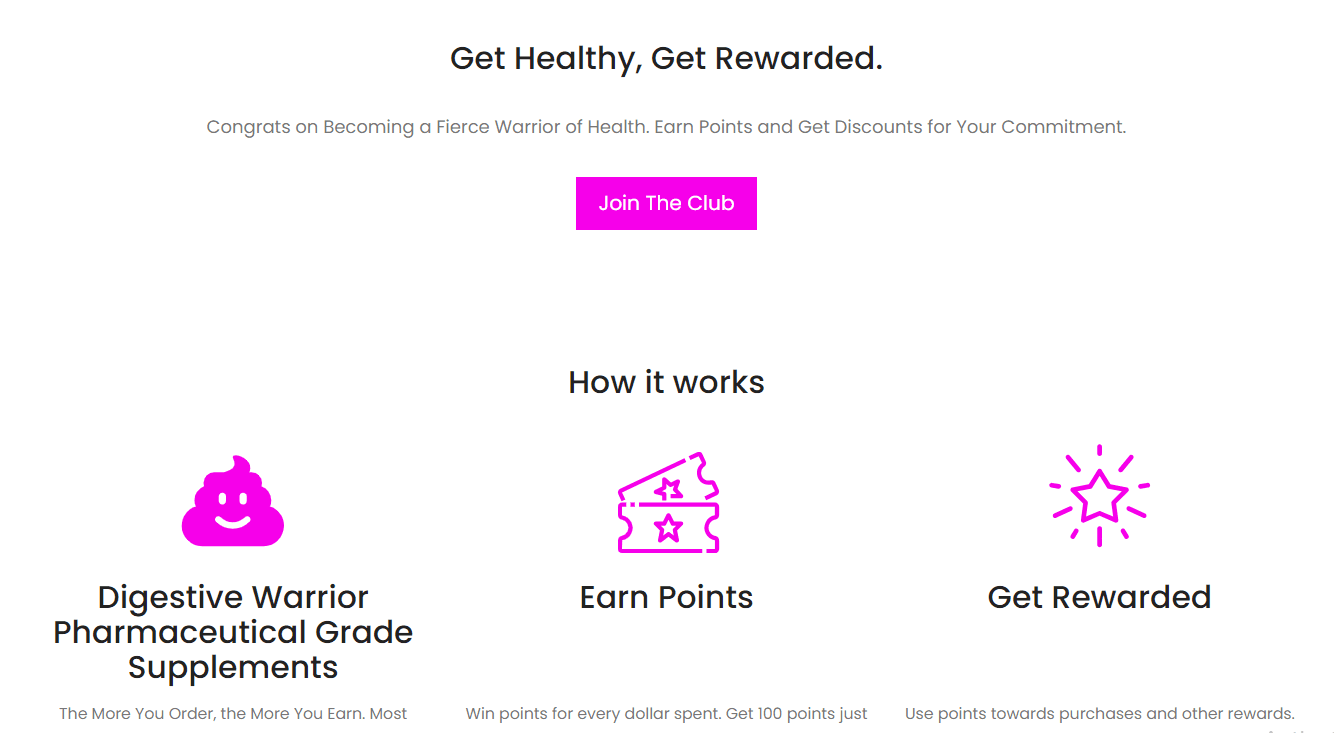
Amazon already has a review system, so it’s easy to collect feedback. But you also want to establish your brand presence. Consider this example from Digestive Warrior – they created a robust community by directly linking their products, like Smart Silver, to specific health benefits on their product pages.
Then they engage customers further with free resources, like a report on toxin burden, and encourage return visits with a rewards program. This approach turns one-time buyers into loyal customers who feel supported beyond their purchase.
Optimize your pricing strategy
Tweaking your pricing strategy can quickly make your product more competitive and appealing on Amazon. Setting the right price that appeals to consumers while maintaining your profit margins increases sales volume and conversion rates.
How to do it
Regularly check your competitors' pricing. Pricing just slightly lower will make your product a more attractive option.
Pricing your product at, for example, $19.99 instead of $20 can psychologically appear as a better deal to customers.
Limited-time offers or discounts create urgency and boost sales, but use them carefully. For instance, offer discounts during holidays or special events to draw attention and rotate deals across your products to maintain high interest without devaluing your catalog.
Use Amazon’s analytics tools to track sales volume, conversion rates, and buy box percentage after adjusting your pricing. Monitor how changes in pricing affect your sales and adjust accordingly.
Example: Offer coupons

You want to go beyond simple adjustments. Look at how this intimate apparel website offered coupons for its undergarments. The site directly reduces the listed price at checkout and gives customers immediate savings.
Using coupons adds a sense of value and urgency. Including coupons in your Amazon pricing strategy will likely attract more visitors and boost sales, especially when the competition heats up during big sale events.
Use A+ Content for a richer product story
A+ Content lets you tell a more compelling product story through additional images, text placements, and even comparison charts. This richer content format will improve your product's appeal and conversion rates.
How to do it:
Use A+ Content to highlight what makes your brand unique. Tell your brand story in a way that connects emotionally with customers.
Use the extra space to expand on your product's features and benefits. More detailed information will sway undecided buyers.
Incorporate high-resolution images and infographics to make complex information easily digestible.
Example
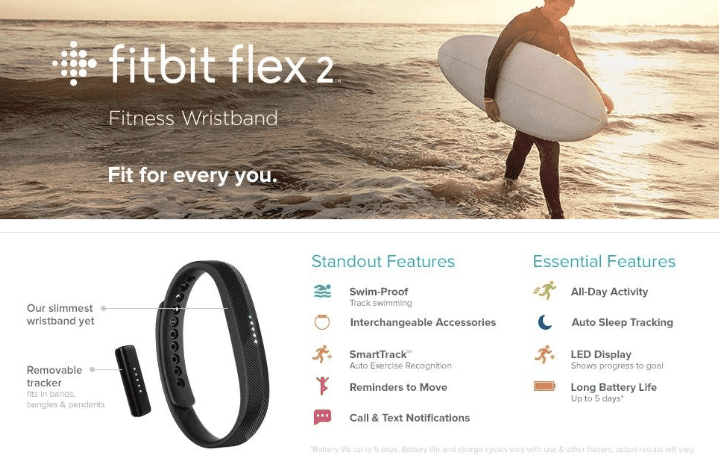
Monitor & adjust based on Amazon Analytics
Use Amazon’s Seller Central to keep an eye on page views, conversion rates, and sales rankings. This data helps you understand your listings' performance and pinpoint improvements. Here’s what to track:
How to do it
Keep an eye on sales, conversion rates, and traffic to your listings. These metrics can indicate the success of your optimization efforts.
Look for patterns in customer behavior. Are there certain times of the day or days of the week when your product performs better?
Use analytics to test different aspects of your listing, from pricing to imagery, and see what works best. Make small adjustments and measure the impact.
Stay updated on Amazon’s algorithm changes
Staying informed about Amazon's algorithm updates helps maintain and improve their product rankings.
Adapting your strategy to changes can mean the difference between staying visible to your target audience or getting lost in the shuffle.
How to adapt
Make it a habit to read up on Amazon seller news and updates. Amazon’s announcements, seller forums, and eCommerce news sites are great resources.
Keep an eye on your product rankings and sales. A sudden change could indicate an algorithm update.
Based on your observations and research, tweak your listings. This could involve updating your keywords, changing your pricing strategy, or enhancing your product images and descriptions.
Leverage seasonal trends & events
Understanding and capitalizing on seasonal trends and major shopping events, tailor your listings to capture the surge in customer interest and search behavior during holidays, seasons, and events like Prime Day or Black Friday.
How to leverage
Keep a calendar of major shopping holidays and seasons that relate to your product category. For example, fitness products may see a surge in January because of New Year's resolutions.
Tailor your product titles, descriptions, and bullet points to reflect seasonal keywords and themes. This might include adding terms like "perfect gift for Mother's Day" or "summer essentials."
Plan special promotions or discounts to coincide with these events. Highlight these offers prominently in your listing to attract deal-seekers.
Anticipate the increase in demand to make sure you have sufficient stock to meet customer needs without running into issues with Amazon's inventory limits.
Optimize for mobile shoppers
As more customers use mobile devices for shopping, making your Amazon listings mobile-friendly.
Strategies for mobile optimization:
Make sure your primary images are clear and compelling.
Keep your titles concise, making sure the most important keywords and benefits are at the beginning.
Given the smaller screen size, bullet points become a shopper's go-to for information. Make sure your bullet points are to the point and highlight the most crucial features and benefits.
Craft your product descriptions with mobile users in mind. Shorter paragraphs and clear, easy-to-understand language can improve readability on small screens.
Enhance customer engagement with interactive content
Adding things like videos and Q&A sections makes shopping more engaging for your customers. They get a better feel for your product and enjoy a more lively shopping experience.
Here’s how:
Videos showcase your product in action, highlight key features, and address common customer questions. They are especially effective for demonstrating how to use your product or showing it from multiple angles.
Respond to questions in your product's Q&A to show you care about customer satisfaction. Show you care about customer satisfaction by actively engaging in your product’s Q&A section. If you’re selling diet products, for instance, responding to meal prep queries, offering dietary tips, or suggesting alternatives for meal planning illustrates your dedication.
5 Things to consider for your Amazon listing optimization strategy
Cross-promotion of products
If you have multiple products in your catalog, use your Amazon listing to cross-promote related items. This can be subtly included in your product descriptions or, more prominently, through A+ Content's comparison chart module. Utilize this feature to showcase and compare several products from your brand on your product page to encourage customers to purchase additional items.
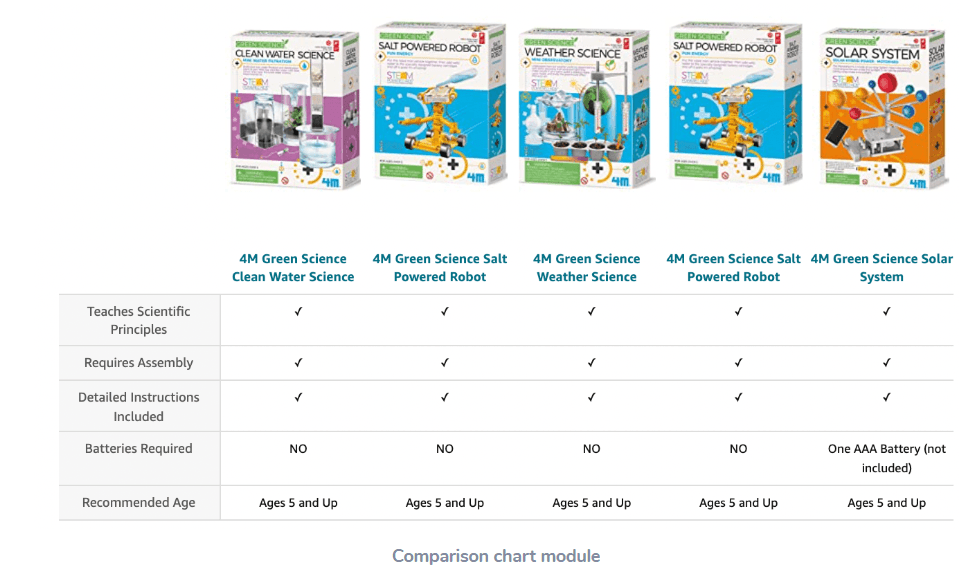
Optimize for voice search
With the rise of smart home devices, optimizing your listings for voice search can help you stay ahead. Focus on natural language and question-based search terms that people might use when speaking to devices like Alexa or Google Home.
C International market considerations
If you're selling globally, remember to tailor your listings for each specific market. This means considering local languages, cultural nuances, search behavior, and regional Amazon SEO practices.
Regulatory compliance
Make sure your listings comply with all regional regulations regarding product claims, certifications, and materials. This is especially important in categories like supplements, electronics, and children's products.
When you sell your products on Amazon, you want to make sure you demonstrate regular compliance so customers are confident in your ability to provide quality products. For instance, consider how this ingredient supplier displaces their membership with respected industry bodies, such as their Alliance for Chemical Distribution (ACD) membership.
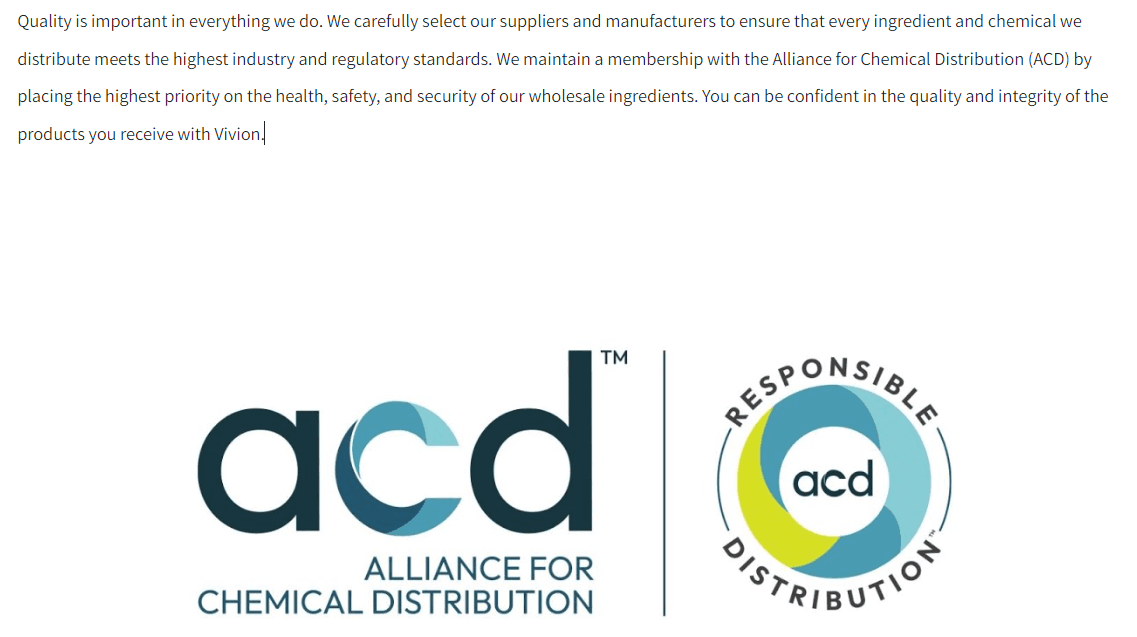
Sharing this information on your product pages or in your Amazon Brand Store lets potential buyers know you meet strict safety standards. This builds trust and motivates them to buy from you, especially in categories where safety and quality matter most to shoppers.
Harness comparative content
Provide customers with comparative content that helps them make informed decisions quickly and confidently.
An image, like this showing different medical alert systems side by side with clear comparisons of cost, device type, and brand strengths, will help shoppers decide better.
Including such comparative tables on your Amazon product page demonstrates transparency and can guide customers to choose your product over others by highlighting its competitive advantages.
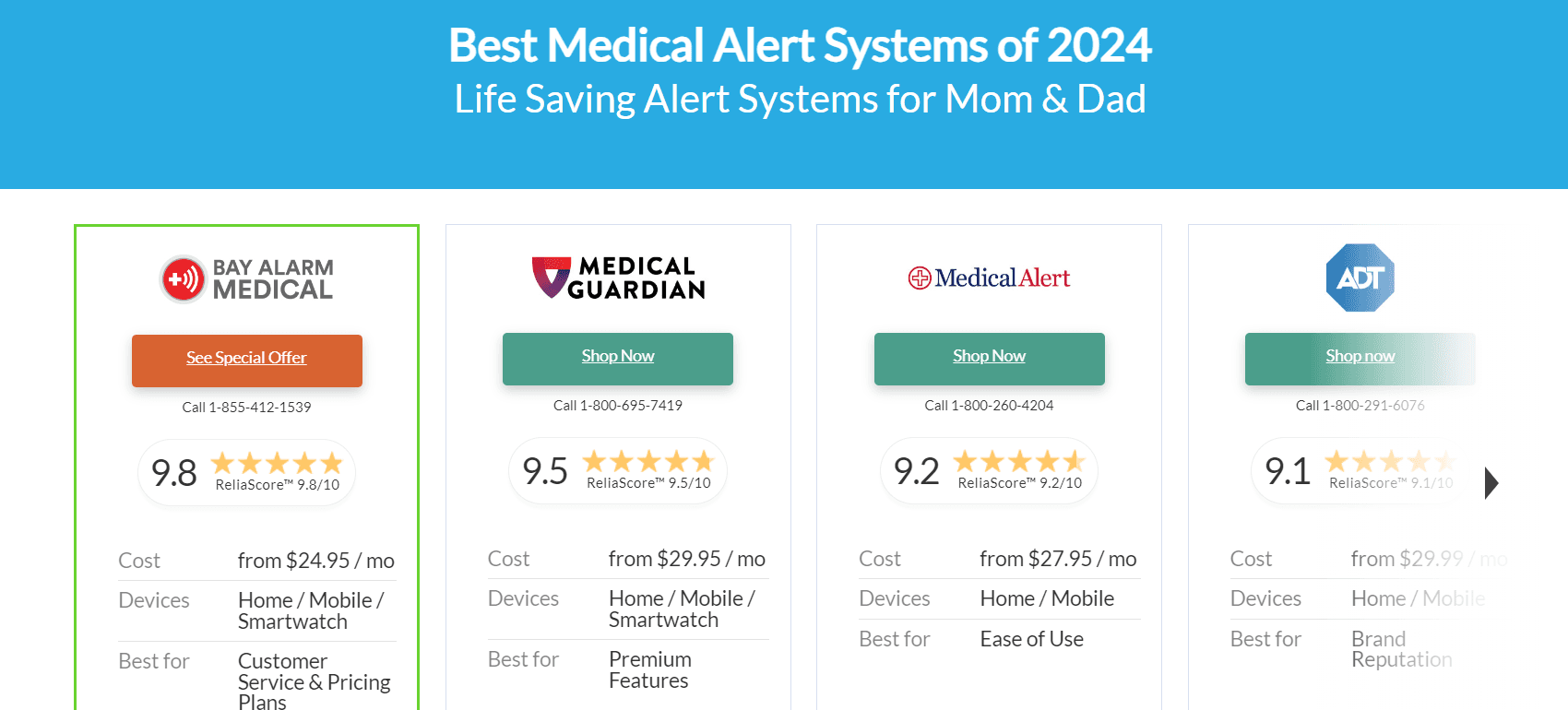
Conclusion
When optimizing your Amazon listings with these hacks, keep asking: How does each change meet my customer's needs? Focus on this question to make sure all your efforts improve the customer experience and make your products more visible and attractive.
But we get it—tackling Amazon's ever-evolving platform can feel like a huge task, especially for Amazon sellers. That's where eStore Factory comes into play. With a powerhouse team of 62 in-house pros covering everything from Amazon consulting to graphic design and SEO, we've got the skills to boost your Amazon game. Rated highly on Amazon SPN, eStore Factory is your go-to team for taking your listings from good to great.
Ready to see your Amazon sales soar? Let's chat. Read more about how eStore Factory can help you dominate Amazon.
Optimizing your Amazon listings will help you sell up to 50% more. Even if you have the best products, stunning photos, and a standout brand, they won't sell if shoppers can't find them. That's where Amazon listing optimization steps in.
If the idea of listing optimization seems daunting, especially with Amazon's constantly changing rules, don't sweat it. We're here to guide you through. This guide lays out 13 straightforward strategies that are proven to get your products noticed. We'll show you how to make your listings shine with clear, simple steps.
What Is Amazon Product Listing & Why Is It Important?
An Amazon product listing includes your product's photos, description, and price. This is where shoppers decide if they want to buy what you're selling. If your product listing is clear, attractive, and has the right details, more people will see it, and more of them will end up buying your product. The more effectively you can communicate the value and appeal of your product through your listing, the better your chances of success on this competitive platform.
13 Amazon listing optimization hacks to boost your sales & visibility
Well-optimized listings can boost conversions by up to 30%. Each of the 13 hacks we're about to explore is a powerful step to boost your product's visibility on search results and sales on Amazon.
As you go through these techniques, challenge yourself to identify at least 2 that you’ve overlooked or underestimated in your current strategy.
Optimize your product titles with the right keywords
Including the right keywords in your product title matches your product with the right customers.
How to do it:
Start by identifying high-volume (typically has 1k searches/month), relevant keywords. Use Tools like Amazon’s search suggestions, MerchantWords, or Helium 10 for this.
Choose keywords that closely match your product’s key features and benefits. Pay attention to the search volume and relevance indicators in Amazon's search suggestions and Helium 10's "Magnet" tool. In Amazon's search bar, look for autocomplete suggestions that fit your product, while in Helium 10, filter for keywords that closely align with what your product offers.
Weave the most important keywords into the beginning of your product title. For example, if you're selling a waterproof, high-definition action camera, instead of packing your title with every possible keyword, you might write: "HD Action Camera - Waterproof, 4K, Wi-Fi Enabled, Wide Angle Lens." This title starts with the primary keyword, "HD Action Camera," followed by the most important features, all while keeping the title clear and easy to understand for your customers.
Example: Amazon’s Search Suggestions

When optimizing your product titles, look for terms that shoppers already use to search for products like yours on Amazon. For instance, if you're selling golf cart kits, you might notice that shoppers use a variety of specific search terms, such as "golf cart kits build your own," "golf cart body kits club car," and "golf cart lift kits."Place these targeted phrases at the start of your title or where they naturally fit to make sure your listing resonates with potential customers searching for customizable options and is easily found.
Now, if your product is a very niche item like golf cart accessories, look for other pages selling the same product and look at their product menu.
It's usually a dropdown at the top or a left-side menu like what you can find in this golf cart accessory shop. Add the terms you find in the menu - these are the commonly searched-for items and search terms your target customers will most likely use too.

Partner with eStore Factory for expert Amazon optimization services
If you are not sure where to kick things off, eStore Factory offers SEO consultancy to manage sponsored ads, they focus on boosting your Amazon listing optimization efforts.
Here’s how it works:
Look into eStore Factory's SEO consultancy, Sponsored Ads management, and account management services, to see which address your challenges.
Collaborate with their team to craft a strategy that aligns with your product goals and market positioning.
With eStore Factory's strategies in place, keep an eye on your listing’s performance and adjust as needed.
Enhance your product images for clarity and appeal
High-quality product images capture customer interest on Amazon. Clear, appealing photos are those that highlight your product's key features, setting you apart from competitors and boosting click-through rates.
How to do it:
Make sure your pictures are at least 1000 pixels in height or width so customers can zoom in without losing clarity.
Use multiple angles and close-up shots, such as top, side, and bottom views, to highlight important features and benefits of your product.
Good lighting is essential. Natural light works best to reveal true colors and textures.
A plain, white background focuses attention on your product and complies with Amazon’s image guidelines.
Example: High-quality picture of Amazon products

Utilize bullet points for key features and benefits
Bullet points quickly highlight what's great about your product and communicate your product's value proposition. It makes it easy for shoppers to understand why they should choose your product over others.
How to do it:
Start with the most compelling product benefit. What problem does it solve for the customer?
Use specific details about features and benefits. Instead of saying "effective," say our supplements are "formulated with clinically proven ingredients to support immune health and energy levels."
Keep each bullet point short and clear. Make sure they are easy to read and straight to the point to keep the shopper's focus.
Example:

Take a look at how this supplement's description gets right to the point. It neatly lays out the benefits and features in a way that's quick to read and easy to understand.
When you're improving your Amazon listings, check out what successful supplement brands do on their sites. We can learn a lot by looking at how they set up their pages.

For instance, this supplement brand, Transparent Labs, lists each supplement's dose and directly explains how it helps with workouts. They use simple language and cite research to prove their points, making it easy for customers to see the benefits.
Maximize backend search terms
Backend search terms are hidden gems for improving your product’s detail page’s visibility on Amazon. These invisible keywords help Amazon understand what your product is about, matching it to customer searches without cluttering your visible listing.
How to do it:
Like with your title, use keyword research tools to find related terms. Think beyond the obvious, including synonyms, related terms, and common misspellings.
Select highly relevant keywords that are not already in your product title or bullet points. Avoid repetition to make the most of your keyword quota.
Amazon limits the number of backend keywords to 250 bytes, including spaces and punctuation. Ensure you're within this limit, focusing on the most impactful keywords.
Amazon's search landscape is dynamic. Make sure to check and refresh your backend keywords every few months, or more often if needed, based on how they're doing and shifts in what customers are searching for.
Collect & leverage customer reviews
Customer reviews build trust and influence buying decisions on Amazon. Positive feedback enhances your product's credibility and contributes to higher search rankings.
How to do it:
Make sure your product meets. Focus on quality, include bonus features, and offer excellent customer service to enhance their experience.
Use Amazon’s automated email system to ask customers for a review after their purchase. Make sure your message complies with Amazon's policies.
Guide customers on how they can leave a review, perhaps with a follow-up email that includes direct links to the review page.
Aim to respond to and address issues in negative reviews within 24 hours if possible. This shows potential customers that you value feedback and are committed to customer satisfaction.
Example

Amazon already has a review system, so it’s easy to collect feedback. But you also want to establish your brand presence. Consider this example from Digestive Warrior – they created a robust community by directly linking their products, like Smart Silver, to specific health benefits on their product pages.
Then they engage customers further with free resources, like a report on toxin burden, and encourage return visits with a rewards program. This approach turns one-time buyers into loyal customers who feel supported beyond their purchase.
Optimize your pricing strategy
Tweaking your pricing strategy can quickly make your product more competitive and appealing on Amazon. Setting the right price that appeals to consumers while maintaining your profit margins increases sales volume and conversion rates.
How to do it
Regularly check your competitors' pricing. Pricing just slightly lower will make your product a more attractive option.
Pricing your product at, for example, $19.99 instead of $20 can psychologically appear as a better deal to customers.
Limited-time offers or discounts create urgency and boost sales, but use them carefully. For instance, offer discounts during holidays or special events to draw attention and rotate deals across your products to maintain high interest without devaluing your catalog.
Use Amazon’s analytics tools to track sales volume, conversion rates, and buy box percentage after adjusting your pricing. Monitor how changes in pricing affect your sales and adjust accordingly.
Example: Offer coupons

You want to go beyond simple adjustments. Look at how this intimate apparel website offered coupons for its undergarments. The site directly reduces the listed price at checkout and gives customers immediate savings.
Using coupons adds a sense of value and urgency. Including coupons in your Amazon pricing strategy will likely attract more visitors and boost sales, especially when the competition heats up during big sale events.
Use A+ Content for a richer product story
A+ Content lets you tell a more compelling product story through additional images, text placements, and even comparison charts. This richer content format will improve your product's appeal and conversion rates.
How to do it:
Use A+ Content to highlight what makes your brand unique. Tell your brand story in a way that connects emotionally with customers.
Use the extra space to expand on your product's features and benefits. More detailed information will sway undecided buyers.
Incorporate high-resolution images and infographics to make complex information easily digestible.
Example

Monitor & adjust based on Amazon Analytics
Use Amazon’s Seller Central to keep an eye on page views, conversion rates, and sales rankings. This data helps you understand your listings' performance and pinpoint improvements. Here’s what to track:
How to do it
Keep an eye on sales, conversion rates, and traffic to your listings. These metrics can indicate the success of your optimization efforts.
Look for patterns in customer behavior. Are there certain times of the day or days of the week when your product performs better?
Use analytics to test different aspects of your listing, from pricing to imagery, and see what works best. Make small adjustments and measure the impact.
Stay updated on Amazon’s algorithm changes
Staying informed about Amazon's algorithm updates helps maintain and improve their product rankings.
Adapting your strategy to changes can mean the difference between staying visible to your target audience or getting lost in the shuffle.
How to adapt
Make it a habit to read up on Amazon seller news and updates. Amazon’s announcements, seller forums, and eCommerce news sites are great resources.
Keep an eye on your product rankings and sales. A sudden change could indicate an algorithm update.
Based on your observations and research, tweak your listings. This could involve updating your keywords, changing your pricing strategy, or enhancing your product images and descriptions.
Leverage seasonal trends & events
Understanding and capitalizing on seasonal trends and major shopping events, tailor your listings to capture the surge in customer interest and search behavior during holidays, seasons, and events like Prime Day or Black Friday.
How to leverage
Keep a calendar of major shopping holidays and seasons that relate to your product category. For example, fitness products may see a surge in January because of New Year's resolutions.
Tailor your product titles, descriptions, and bullet points to reflect seasonal keywords and themes. This might include adding terms like "perfect gift for Mother's Day" or "summer essentials."
Plan special promotions or discounts to coincide with these events. Highlight these offers prominently in your listing to attract deal-seekers.
Anticipate the increase in demand to make sure you have sufficient stock to meet customer needs without running into issues with Amazon's inventory limits.
Optimize for mobile shoppers
As more customers use mobile devices for shopping, making your Amazon listings mobile-friendly.
Strategies for mobile optimization:
Make sure your primary images are clear and compelling.
Keep your titles concise, making sure the most important keywords and benefits are at the beginning.
Given the smaller screen size, bullet points become a shopper's go-to for information. Make sure your bullet points are to the point and highlight the most crucial features and benefits.
Craft your product descriptions with mobile users in mind. Shorter paragraphs and clear, easy-to-understand language can improve readability on small screens.
Enhance customer engagement with interactive content
Adding things like videos and Q&A sections makes shopping more engaging for your customers. They get a better feel for your product and enjoy a more lively shopping experience.
Here’s how:
Videos showcase your product in action, highlight key features, and address common customer questions. They are especially effective for demonstrating how to use your product or showing it from multiple angles.
Respond to questions in your product's Q&A to show you care about customer satisfaction. Show you care about customer satisfaction by actively engaging in your product’s Q&A section. If you’re selling diet products, for instance, responding to meal prep queries, offering dietary tips, or suggesting alternatives for meal planning illustrates your dedication.
5 Things to consider for your Amazon listing optimization strategy
Cross-promotion of products
If you have multiple products in your catalog, use your Amazon listing to cross-promote related items. This can be subtly included in your product descriptions or, more prominently, through A+ Content's comparison chart module. Utilize this feature to showcase and compare several products from your brand on your product page to encourage customers to purchase additional items.

Optimize for voice search
With the rise of smart home devices, optimizing your listings for voice search can help you stay ahead. Focus on natural language and question-based search terms that people might use when speaking to devices like Alexa or Google Home.
C International market considerations
If you're selling globally, remember to tailor your listings for each specific market. This means considering local languages, cultural nuances, search behavior, and regional Amazon SEO practices.
Regulatory compliance
Make sure your listings comply with all regional regulations regarding product claims, certifications, and materials. This is especially important in categories like supplements, electronics, and children's products.
When you sell your products on Amazon, you want to make sure you demonstrate regular compliance so customers are confident in your ability to provide quality products. For instance, consider how this ingredient supplier displaces their membership with respected industry bodies, such as their Alliance for Chemical Distribution (ACD) membership.

Sharing this information on your product pages or in your Amazon Brand Store lets potential buyers know you meet strict safety standards. This builds trust and motivates them to buy from you, especially in categories where safety and quality matter most to shoppers.
Harness comparative content
Provide customers with comparative content that helps them make informed decisions quickly and confidently.
An image, like this showing different medical alert systems side by side with clear comparisons of cost, device type, and brand strengths, will help shoppers decide better.
Including such comparative tables on your Amazon product page demonstrates transparency and can guide customers to choose your product over others by highlighting its competitive advantages.

Conclusion
When optimizing your Amazon listings with these hacks, keep asking: How does each change meet my customer's needs? Focus on this question to make sure all your efforts improve the customer experience and make your products more visible and attractive.
But we get it—tackling Amazon's ever-evolving platform can feel like a huge task, especially for Amazon sellers. That's where eStore Factory comes into play. With a powerhouse team of 62 in-house pros covering everything from Amazon consulting to graphic design and SEO, we've got the skills to boost your Amazon game. Rated highly on Amazon SPN, eStore Factory is your go-to team for taking your listings from good to great.
Ready to see your Amazon sales soar? Let's chat. Read more about how eStore Factory can help you dominate Amazon.
Optimizing your Amazon listings will help you sell up to 50% more. Even if you have the best products, stunning photos, and a standout brand, they won't sell if shoppers can't find them. That's where Amazon listing optimization steps in.
If the idea of listing optimization seems daunting, especially with Amazon's constantly changing rules, don't sweat it. We're here to guide you through. This guide lays out 13 straightforward strategies that are proven to get your products noticed. We'll show you how to make your listings shine with clear, simple steps.
What Is Amazon Product Listing & Why Is It Important?
An Amazon product listing includes your product's photos, description, and price. This is where shoppers decide if they want to buy what you're selling. If your product listing is clear, attractive, and has the right details, more people will see it, and more of them will end up buying your product. The more effectively you can communicate the value and appeal of your product through your listing, the better your chances of success on this competitive platform.
13 Amazon listing optimization hacks to boost your sales & visibility
Well-optimized listings can boost conversions by up to 30%. Each of the 13 hacks we're about to explore is a powerful step to boost your product's visibility on search results and sales on Amazon.
As you go through these techniques, challenge yourself to identify at least 2 that you’ve overlooked or underestimated in your current strategy.
Optimize your product titles with the right keywords
Including the right keywords in your product title matches your product with the right customers.
How to do it:
Start by identifying high-volume (typically has 1k searches/month), relevant keywords. Use Tools like Amazon’s search suggestions, MerchantWords, or Helium 10 for this.
Choose keywords that closely match your product’s key features and benefits. Pay attention to the search volume and relevance indicators in Amazon's search suggestions and Helium 10's "Magnet" tool. In Amazon's search bar, look for autocomplete suggestions that fit your product, while in Helium 10, filter for keywords that closely align with what your product offers.
Weave the most important keywords into the beginning of your product title. For example, if you're selling a waterproof, high-definition action camera, instead of packing your title with every possible keyword, you might write: "HD Action Camera - Waterproof, 4K, Wi-Fi Enabled, Wide Angle Lens." This title starts with the primary keyword, "HD Action Camera," followed by the most important features, all while keeping the title clear and easy to understand for your customers.
Example: Amazon’s Search Suggestions

When optimizing your product titles, look for terms that shoppers already use to search for products like yours on Amazon. For instance, if you're selling golf cart kits, you might notice that shoppers use a variety of specific search terms, such as "golf cart kits build your own," "golf cart body kits club car," and "golf cart lift kits."Place these targeted phrases at the start of your title or where they naturally fit to make sure your listing resonates with potential customers searching for customizable options and is easily found.
Now, if your product is a very niche item like golf cart accessories, look for other pages selling the same product and look at their product menu.
It's usually a dropdown at the top or a left-side menu like what you can find in this golf cart accessory shop. Add the terms you find in the menu - these are the commonly searched-for items and search terms your target customers will most likely use too.

Partner with eStore Factory for expert Amazon optimization services
If you are not sure where to kick things off, eStore Factory offers SEO consultancy to manage sponsored ads, they focus on boosting your Amazon listing optimization efforts.
Here’s how it works:
Look into eStore Factory's SEO consultancy, Sponsored Ads management, and account management services, to see which address your challenges.
Collaborate with their team to craft a strategy that aligns with your product goals and market positioning.
With eStore Factory's strategies in place, keep an eye on your listing’s performance and adjust as needed.
Enhance your product images for clarity and appeal
High-quality product images capture customer interest on Amazon. Clear, appealing photos are those that highlight your product's key features, setting you apart from competitors and boosting click-through rates.
How to do it:
Make sure your pictures are at least 1000 pixels in height or width so customers can zoom in without losing clarity.
Use multiple angles and close-up shots, such as top, side, and bottom views, to highlight important features and benefits of your product.
Good lighting is essential. Natural light works best to reveal true colors and textures.
A plain, white background focuses attention on your product and complies with Amazon’s image guidelines.
Example: High-quality picture of Amazon products

Utilize bullet points for key features and benefits
Bullet points quickly highlight what's great about your product and communicate your product's value proposition. It makes it easy for shoppers to understand why they should choose your product over others.
How to do it:
Start with the most compelling product benefit. What problem does it solve for the customer?
Use specific details about features and benefits. Instead of saying "effective," say our supplements are "formulated with clinically proven ingredients to support immune health and energy levels."
Keep each bullet point short and clear. Make sure they are easy to read and straight to the point to keep the shopper's focus.
Example:

Take a look at how this supplement's description gets right to the point. It neatly lays out the benefits and features in a way that's quick to read and easy to understand.
When you're improving your Amazon listings, check out what successful supplement brands do on their sites. We can learn a lot by looking at how they set up their pages.

For instance, this supplement brand, Transparent Labs, lists each supplement's dose and directly explains how it helps with workouts. They use simple language and cite research to prove their points, making it easy for customers to see the benefits.
Maximize backend search terms
Backend search terms are hidden gems for improving your product’s detail page’s visibility on Amazon. These invisible keywords help Amazon understand what your product is about, matching it to customer searches without cluttering your visible listing.
How to do it:
Like with your title, use keyword research tools to find related terms. Think beyond the obvious, including synonyms, related terms, and common misspellings.
Select highly relevant keywords that are not already in your product title or bullet points. Avoid repetition to make the most of your keyword quota.
Amazon limits the number of backend keywords to 250 bytes, including spaces and punctuation. Ensure you're within this limit, focusing on the most impactful keywords.
Amazon's search landscape is dynamic. Make sure to check and refresh your backend keywords every few months, or more often if needed, based on how they're doing and shifts in what customers are searching for.
Collect & leverage customer reviews
Customer reviews build trust and influence buying decisions on Amazon. Positive feedback enhances your product's credibility and contributes to higher search rankings.
How to do it:
Make sure your product meets. Focus on quality, include bonus features, and offer excellent customer service to enhance their experience.
Use Amazon’s automated email system to ask customers for a review after their purchase. Make sure your message complies with Amazon's policies.
Guide customers on how they can leave a review, perhaps with a follow-up email that includes direct links to the review page.
Aim to respond to and address issues in negative reviews within 24 hours if possible. This shows potential customers that you value feedback and are committed to customer satisfaction.
Example

Amazon already has a review system, so it’s easy to collect feedback. But you also want to establish your brand presence. Consider this example from Digestive Warrior – they created a robust community by directly linking their products, like Smart Silver, to specific health benefits on their product pages.
Then they engage customers further with free resources, like a report on toxin burden, and encourage return visits with a rewards program. This approach turns one-time buyers into loyal customers who feel supported beyond their purchase.
Optimize your pricing strategy
Tweaking your pricing strategy can quickly make your product more competitive and appealing on Amazon. Setting the right price that appeals to consumers while maintaining your profit margins increases sales volume and conversion rates.
How to do it
Regularly check your competitors' pricing. Pricing just slightly lower will make your product a more attractive option.
Pricing your product at, for example, $19.99 instead of $20 can psychologically appear as a better deal to customers.
Limited-time offers or discounts create urgency and boost sales, but use them carefully. For instance, offer discounts during holidays or special events to draw attention and rotate deals across your products to maintain high interest without devaluing your catalog.
Use Amazon’s analytics tools to track sales volume, conversion rates, and buy box percentage after adjusting your pricing. Monitor how changes in pricing affect your sales and adjust accordingly.
Example: Offer coupons

You want to go beyond simple adjustments. Look at how this intimate apparel website offered coupons for its undergarments. The site directly reduces the listed price at checkout and gives customers immediate savings.
Using coupons adds a sense of value and urgency. Including coupons in your Amazon pricing strategy will likely attract more visitors and boost sales, especially when the competition heats up during big sale events.
Use A+ Content for a richer product story
A+ Content lets you tell a more compelling product story through additional images, text placements, and even comparison charts. This richer content format will improve your product's appeal and conversion rates.
How to do it:
Use A+ Content to highlight what makes your brand unique. Tell your brand story in a way that connects emotionally with customers.
Use the extra space to expand on your product's features and benefits. More detailed information will sway undecided buyers.
Incorporate high-resolution images and infographics to make complex information easily digestible.
Example

Monitor & adjust based on Amazon Analytics
Use Amazon’s Seller Central to keep an eye on page views, conversion rates, and sales rankings. This data helps you understand your listings' performance and pinpoint improvements. Here’s what to track:
How to do it
Keep an eye on sales, conversion rates, and traffic to your listings. These metrics can indicate the success of your optimization efforts.
Look for patterns in customer behavior. Are there certain times of the day or days of the week when your product performs better?
Use analytics to test different aspects of your listing, from pricing to imagery, and see what works best. Make small adjustments and measure the impact.
Stay updated on Amazon’s algorithm changes
Staying informed about Amazon's algorithm updates helps maintain and improve their product rankings.
Adapting your strategy to changes can mean the difference between staying visible to your target audience or getting lost in the shuffle.
How to adapt
Make it a habit to read up on Amazon seller news and updates. Amazon’s announcements, seller forums, and eCommerce news sites are great resources.
Keep an eye on your product rankings and sales. A sudden change could indicate an algorithm update.
Based on your observations and research, tweak your listings. This could involve updating your keywords, changing your pricing strategy, or enhancing your product images and descriptions.
Leverage seasonal trends & events
Understanding and capitalizing on seasonal trends and major shopping events, tailor your listings to capture the surge in customer interest and search behavior during holidays, seasons, and events like Prime Day or Black Friday.
How to leverage
Keep a calendar of major shopping holidays and seasons that relate to your product category. For example, fitness products may see a surge in January because of New Year's resolutions.
Tailor your product titles, descriptions, and bullet points to reflect seasonal keywords and themes. This might include adding terms like "perfect gift for Mother's Day" or "summer essentials."
Plan special promotions or discounts to coincide with these events. Highlight these offers prominently in your listing to attract deal-seekers.
Anticipate the increase in demand to make sure you have sufficient stock to meet customer needs without running into issues with Amazon's inventory limits.
Optimize for mobile shoppers
As more customers use mobile devices for shopping, making your Amazon listings mobile-friendly.
Strategies for mobile optimization:
Make sure your primary images are clear and compelling.
Keep your titles concise, making sure the most important keywords and benefits are at the beginning.
Given the smaller screen size, bullet points become a shopper's go-to for information. Make sure your bullet points are to the point and highlight the most crucial features and benefits.
Craft your product descriptions with mobile users in mind. Shorter paragraphs and clear, easy-to-understand language can improve readability on small screens.
Enhance customer engagement with interactive content
Adding things like videos and Q&A sections makes shopping more engaging for your customers. They get a better feel for your product and enjoy a more lively shopping experience.
Here’s how:
Videos showcase your product in action, highlight key features, and address common customer questions. They are especially effective for demonstrating how to use your product or showing it from multiple angles.
Respond to questions in your product's Q&A to show you care about customer satisfaction. Show you care about customer satisfaction by actively engaging in your product’s Q&A section. If you’re selling diet products, for instance, responding to meal prep queries, offering dietary tips, or suggesting alternatives for meal planning illustrates your dedication.
5 Things to consider for your Amazon listing optimization strategy
Cross-promotion of products
If you have multiple products in your catalog, use your Amazon listing to cross-promote related items. This can be subtly included in your product descriptions or, more prominently, through A+ Content's comparison chart module. Utilize this feature to showcase and compare several products from your brand on your product page to encourage customers to purchase additional items.

Optimize for voice search
With the rise of smart home devices, optimizing your listings for voice search can help you stay ahead. Focus on natural language and question-based search terms that people might use when speaking to devices like Alexa or Google Home.
C International market considerations
If you're selling globally, remember to tailor your listings for each specific market. This means considering local languages, cultural nuances, search behavior, and regional Amazon SEO practices.
Regulatory compliance
Make sure your listings comply with all regional regulations regarding product claims, certifications, and materials. This is especially important in categories like supplements, electronics, and children's products.
When you sell your products on Amazon, you want to make sure you demonstrate regular compliance so customers are confident in your ability to provide quality products. For instance, consider how this ingredient supplier displaces their membership with respected industry bodies, such as their Alliance for Chemical Distribution (ACD) membership.

Sharing this information on your product pages or in your Amazon Brand Store lets potential buyers know you meet strict safety standards. This builds trust and motivates them to buy from you, especially in categories where safety and quality matter most to shoppers.
Harness comparative content
Provide customers with comparative content that helps them make informed decisions quickly and confidently.
An image, like this showing different medical alert systems side by side with clear comparisons of cost, device type, and brand strengths, will help shoppers decide better.
Including such comparative tables on your Amazon product page demonstrates transparency and can guide customers to choose your product over others by highlighting its competitive advantages.

Conclusion
When optimizing your Amazon listings with these hacks, keep asking: How does each change meet my customer's needs? Focus on this question to make sure all your efforts improve the customer experience and make your products more visible and attractive.
But we get it—tackling Amazon's ever-evolving platform can feel like a huge task, especially for Amazon sellers. That's where eStore Factory comes into play. With a powerhouse team of 62 in-house pros covering everything from Amazon consulting to graphic design and SEO, we've got the skills to boost your Amazon game. Rated highly on Amazon SPN, eStore Factory is your go-to team for taking your listings from good to great.
Ready to see your Amazon sales soar? Let's chat. Read more about how eStore Factory can help you dominate Amazon.






